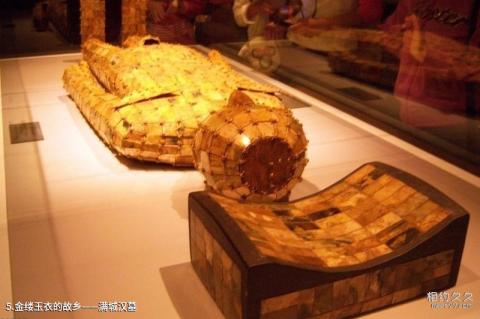
Introduction to Mancheng Han Tombs, the hometown of golden jade garments: The display area is 1,300 square meters. The Mancheng Han Tomb is a major archaeological discovery in China. It was excavated in Lingshan, Mancheng County, Hebei Province in 1968. It is the tomb of Liu Sheng, King Jing of Zhongshan in the Western Han Dynasty, and his wife Dou Wan. A total of more than 10,000 pieces of gold, silver, copper, iron, jade, stone, pottery, lacquer and other cultural relics were unearthed from the two tombs. Their rich variety and exquisite craftsmanship are rare among the Han tombs that have been excavated. They are very important for the study of the history of the Han Dynasty. Culture is extremely valuable. The exhibition content selects more than 300 representative artifacts, which are divided into eating and cooking utensils, lamps, stoves, entertainment, dressing and toilet utensils, medicine and measuring instruments, tools, ceremonial guards and weapons, chariots and horses, and curtain structures. There are 12 exhibit groups including utensils and accessories, painted pottery, jade, stone and glassware. The display form is supplemented by necessary restored landscapes, models and pictures. The overall style reflects the perfect unity of traditional aesthetic concepts and modern design concepts, and comprehensively and completely displays the style of the Han tomb cultural relics in the city. In 1999, it won the title of "Top Ten National Exhibitions and Exhibitions" in the third national cultural relics systematic display and exhibition selection event organized by the State Administration of Cultural Heritage.
